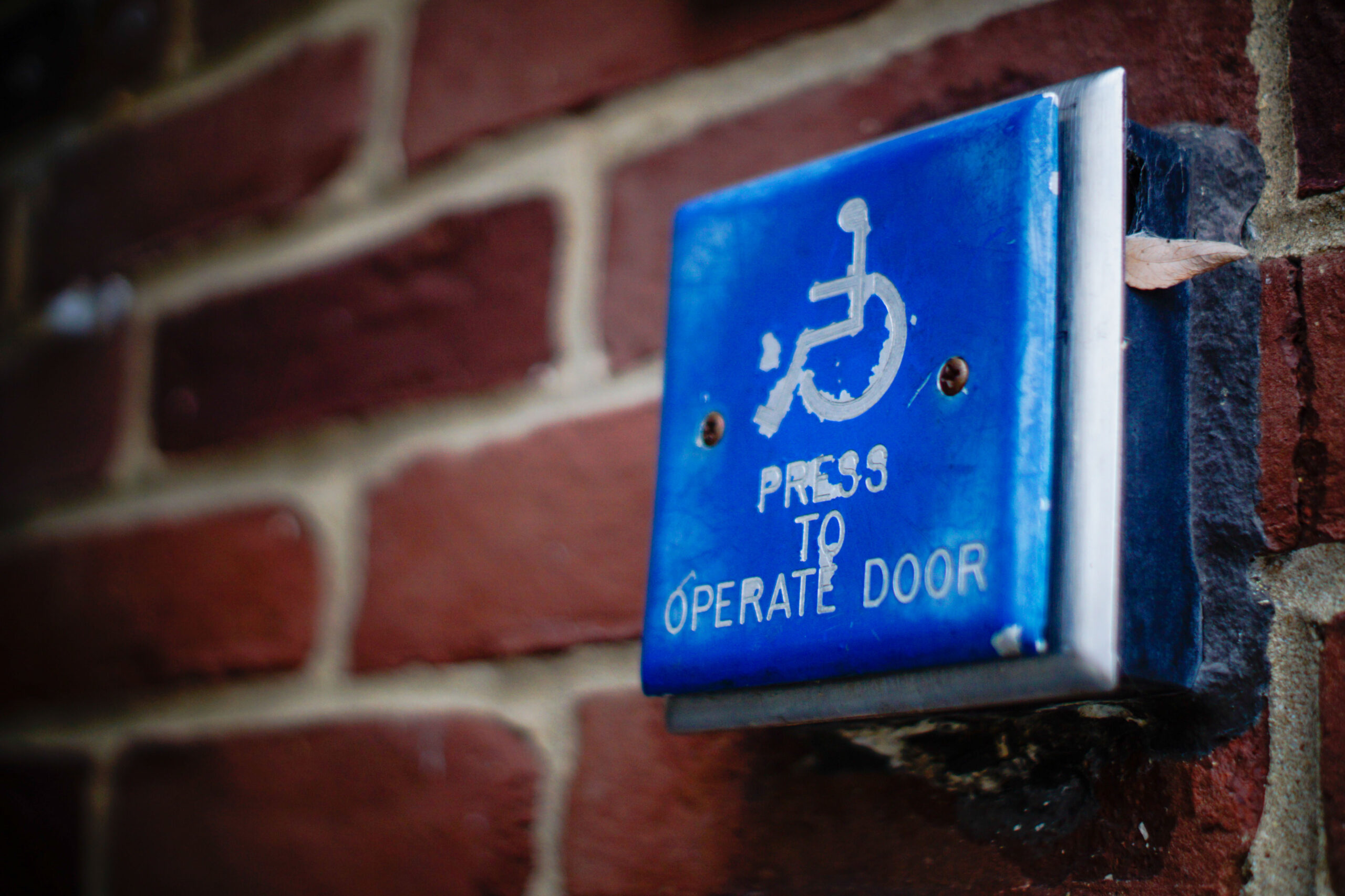With the retirement of Judy Weaver, Goshen College’s coordinator of accessibility services, GC is now searching for a new applicant to fill the position.
The job posting on GC’s website lists some of the tasks of the role: “promotes accessibility services on campus,” “determines reasonable and appropriate accommodations for the classroom,” “informs faculty of needs through letters of accommodation each semester” and more. The position is part of what ensures that the college works to create a just collegiate experience for all students.Yet some students feel that Goshen needs to do more about accessibility issues on campus. That’s why Robin Chico helped form Discrimination Student Caucus, or DSC, alongside Isabella Ruiz.
DSC is an organization that “was formed to address issues of student discrimination on campus,” as Chico said. “My vision is that students will be able to voice their experiences and opinions regarding discrimination on campus in a safe space led by and for students.”
“Whether it is narrow hallways and a steep ramp in the art building,” Chico said, “or it is the lack of transport across or under railroad crossings, accessibility is one of the most important areas of focus for DSC.”
The pinnacle of physical accessibility issues on campus is the Visual Arts building, the oldest classroom building on campus. Third-year art major Anna Kauffman describes it as “not accessible at all.”
The only wheelchair accessible door is 30 inches wide — the American with Disabilities Act (ADA) requires all doors to measure 32 inches across the base — and it doesn’t have a press-to-open button. Only the first floor and the basement are accessible without stairs and the only way to get to the basement is through a ramp far too steep for a wheelchair. Many classrooms are on the top floors of the building, rendering the classes impossible to reach without climbing stairs.
But while the art building issues may not affect many students outside of the art department, more visible to on-campus students are the issues with housing in the dorms.
Technically, the dormitories, student apartments and East Hall are ADA compliant (Kulp Hall has no wheelchair-accessible entrance, which GC clearly states on its website).
According to the ADA National Network, schools are required by the ADA to “remove architectural barriers … where such removal is readily achievable.” For example, ramps could be installed and furniture could be removed or rearranged.
However, as DSC pointed out in a letter to the editor for The Record, the entrances to floors and bathrooms are difficult to enter in a wheelchair — “inaccessible,” as the letter from DSC read.
Goshen also claims East Hall as the “only small group house that is currently handicapped accessible.” Yet, while the house does have a ramp leading to its door, it also only has one handicapped bathroom and its stairs are extremely steep.
The Octavio Romero apartments are billed as ADA accessible as well. With wide hallways, ramps at both entrances and an elevator, it seems to make sense. However, last year, the sole elevator in the four-story building was down for weeks on end.
Chad Coleman, GC’s director of campus safety and student life operations, said that the elevator repair company was unable to find the part to service, due to COVID-19 supply chain issues. The fact remains, though, that for weeks, stairs were the only way to get above the first floor.
Existing accommodations failing to work aren’t limited to elevators, either. Carlos Lichty, a sophomore who used a wheelchair to get around earlier this year, said that the buttons to open doors to the Connector would sometimes not work. When nobody was traveling with him, Lichty had to wait at the door until someone came along to open it.
Additionally, as Chico says, “lack of transport across or under railroad crossings” is a major issue. The underpass is far too steep to install a ramp, but railroad tracks can prove an obstacle due to the large divots in the ground that they create.
Chico explains that two major foci of DSC are physical accessibility, such as the issues outlined here, and “accessibility for students from different cultural backgrounds, in [terms of] them feeling safe and accepted.” They want GC to examine its policies in-depth, taking a “comprehensive examination at its retention rates [and] demographics.”
The club meets every Tuesday from 4:00 to 5:00 p.m. in the Yost Room of Umble Center.
DSC’s faculty advisor, Julia Schiavone Camacho, said that she appreciates how Chico and Ruiz “framed this work around how we might not always agree in defining the issues or in how we should address them. Talk to the student leaders or me! Ask us questions,” Schiavone Camacho said.



